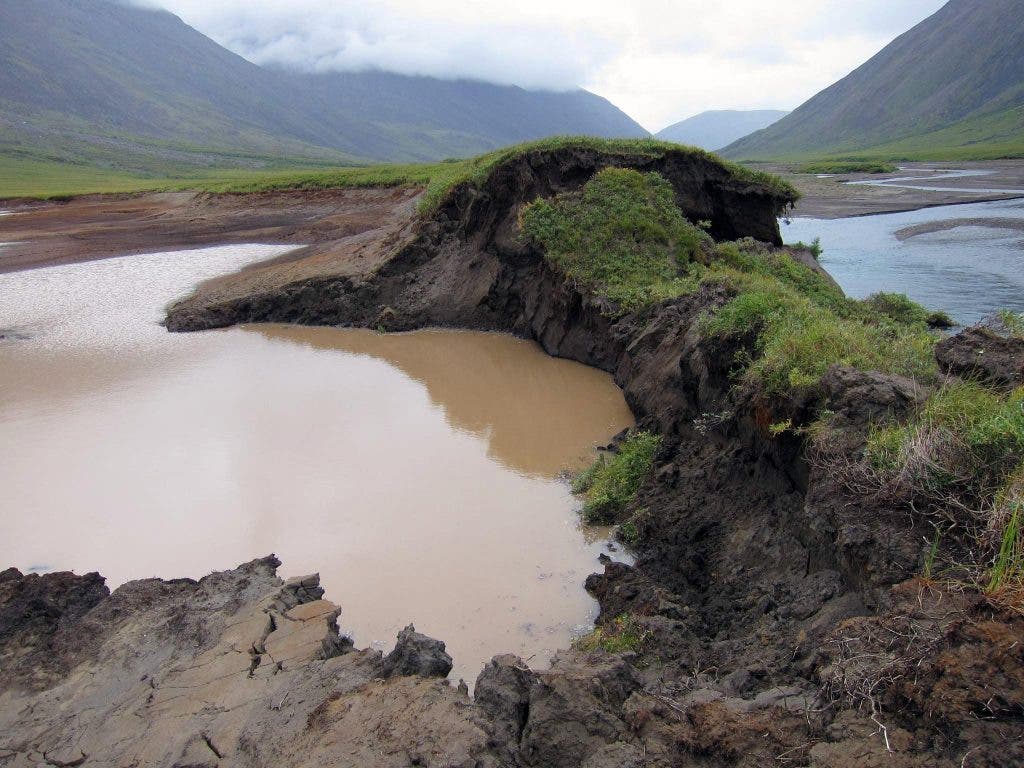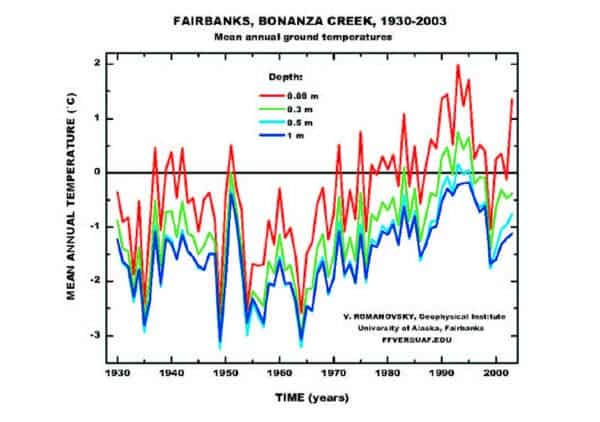Specialists from the University of Cambridge and the University of Colorado estimate that the effects of climate change are going to take a hefty toll on our economy — $326 trillion in damage by the year 2200, roughly $201 million each hour.
However, new research indicates that even this huge sum might be underestimating the true scope of the impact global warming would have on our lives — and the secret is melting slowly under the Arctic’s soil, the Christian News Monitor reports.

Credit:NPS Climate Change Response
How warmer soil will cost us big bucks
Permafrost is soil that consistently stays below the freezing point of water, 0 °C (32 °F), for at least two years. It’s very rich in organics, as being half-frozen tends to make bacteria lazy and slow to decompose fallen leaves, dead plants and so forth, and the frozen soil can trap pockets of gases more easily.
In its current, chilled condition, it has an important role to play in trapping greenhouse gases, but rising temperatures mean that all those organics will be fed upon and the gases stored there for thousands or million of years will be free to move through the soil, releasing a massive quantity of methane and carbon dioxide into the atmosphere.

Image credit: Arctic Climate Impact Assessment.
“The impacts will be felt around the world,” study co-author Chris Hope of the University of Cambridge’s Judge Business School said in an email to the Christian Science Monitor.
According to a letter published in Nature Climate Change, if we take into account the melting permafrost – currently holding 1,700 gigatons or 1.7 trillion tons of carbon – the predicted economic impact of climate change increases from $326 trillion to $369 trillion by 2200 – a whopping 13% increase.
To come to this number, researchers first calculated the rate at which the permafrost might release its gases. Then, based on this estimation, they predicted the cost to mitigate the effects of the additional carbon and methane.
That’s a lot of money, but..
But what exactly does “cost of climate change” mean? Surely we won’t be spending $369 trillion on air conditioning! Hehe, well that’s included there too, but the sum also takes into account factors from loss of agricultural production as crops fail due to desertification or freak weather and the civil unrest that stems from it, political breakdown, the expected growth of the toll on public health systems, ecosystems, loss of coast to rising seas, even the increase in frequency of natural disasters.
Because melting permafrost comprises a significant chunk of the anticipated economic damage of climate change, focusing on the problem should help mitigate its detrimental effects:
“We want to use these models to help us make better decisions—linking scientific and economic models together is a way to help us do that,” Hope said. “We need to estimate how much it will cost if we do nothing, how much it will cost if we do something, and how much we need to spend to cut back greenhouse gases.”






